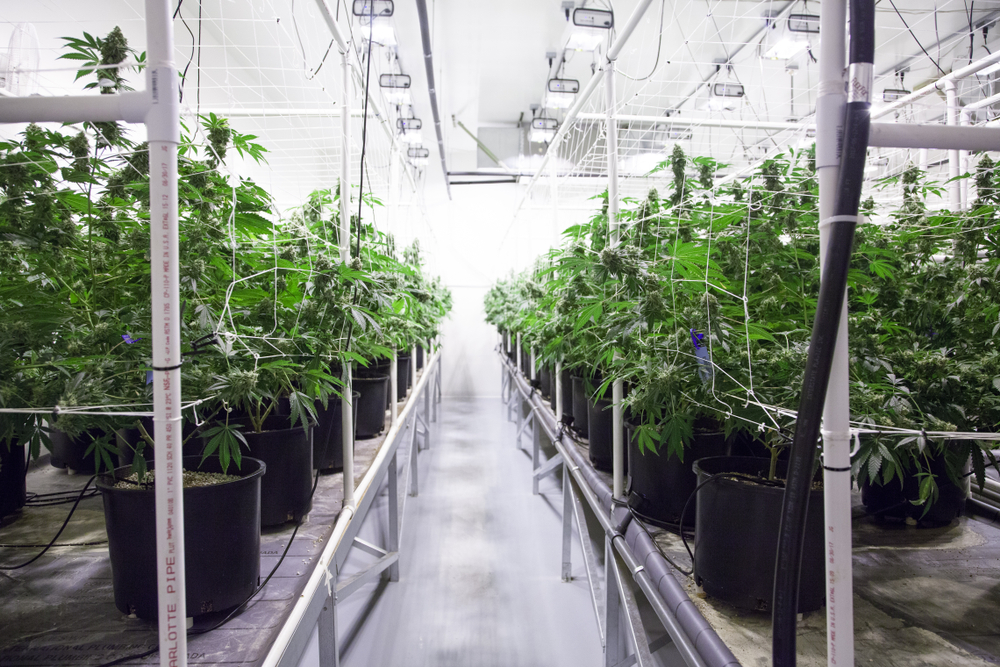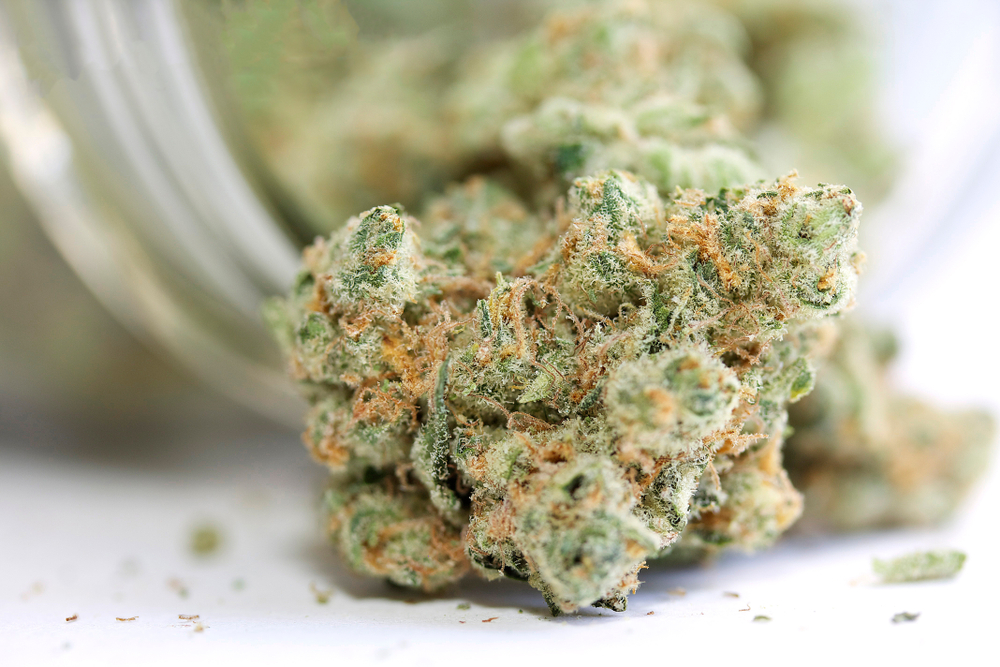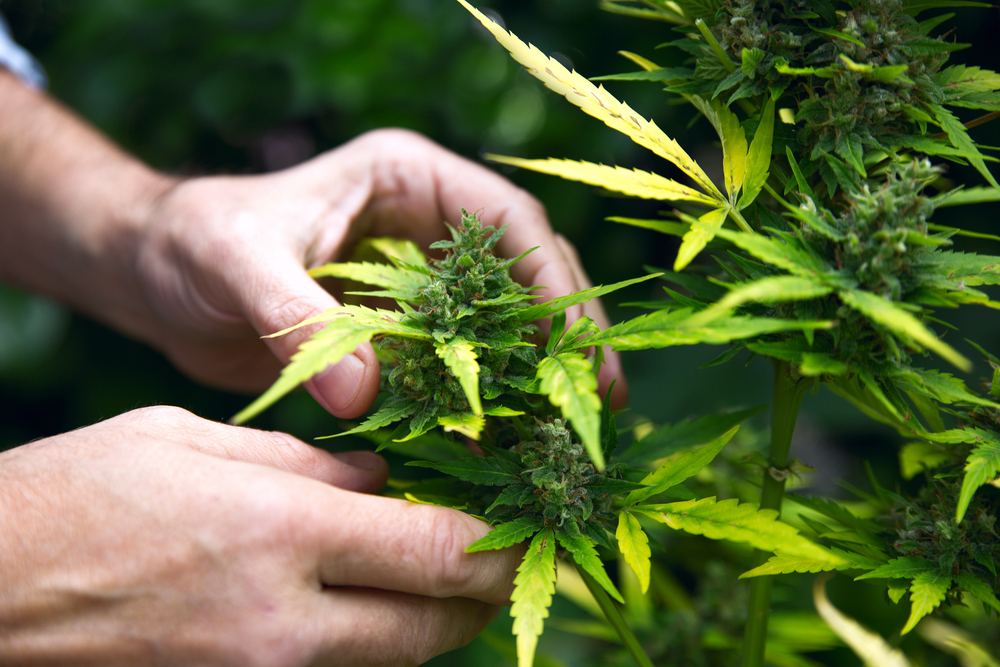Cannabis
Cannabis & Cannabinoids – Everything You Need to Know
Have you ever wondered what gives cannabis its psychoactive and medical properties? No, it’s not magic – it’s cannabinoids!
Cannabinoids affect our minds and bodies with their incredible plant-based effects. In other, it’s the cannabinoids in cannabis that make us high, relax and unwind.
While THC and CBD are two of the most common and well-known cannabinoids, the cannabis plant has hundreds. You might not know but, our bodies produce cannabinoids!
But what are cannabinoids exactly? How do they work, and how do they get us high?
You’ll be able to find the answer to those questions and many more just down below!
What are Cannabinoids?

Cannabinoids are lipid compounds found in the cannabis plant.
You may already be familiar with a couple of these compounds. Tetrahydrocannabinol (THC) and cannabidiol (CBD) are the most widely abundant in cannabis.
However, there are dozens of other cannabinoids within the cannabis plant that you may have never heard of, or scientists have yet to discover.
Though these compounds are primarily with cannabis, there are many other living things, including humans!
Because we produce our own cannabinoids. (see more on that below).
The biological system that receives and processes cannabinoids is known as the endocannabinoid system.
The endocannabinoid system (ECS) plays a role in cognitive and physical processes and numerous neural functions, including pain perception, motor coordination, and emotional regulation.
The ECS is a series of cannabinoid receptors, endocannabinoids, and synthesizing enzymes. Primary cannabinoid receptors, CB1, connect to the central nervous system (CNS) and regulate serotonin, cortisol, and dopamine. Secondary receptors, CB2, connect to the gastrointestinal and immune systems.
Let’s examine the differences between the cannabinoids produced by our ECS and those found in cannabis.
Types of Cannabinoids
Endogenous Cannabinoids
Nearly every animal on Earth has an endocannabinoid system in addition to humans. So, naturally, every one of these creatures also produces endogenous cannabinoids or endocannabinoids.
Our bodies use endocannabinoids to treat pain, moderate energy, regulate blood pressure, and many more.
Anandamide (AEA) was the first endocannabinoid ever discovered. Named after the Sanskrit word for “bliss,” this endocannabinoid is shown to produce euphoric feelings similar to THC. Additionally, anandamide plays a role in many biological processes, including pain, fertility, and memory.
2-arachidonoylglycerol (2AG) is the second endocannabinoid. These abundant endocannabinoids influence many functions, such as appetite, immunity, and addictive behaviours.
Exogenous Cannabinoids
Plant cannabinoids, such as those found in cannabis, are exogenous cannabinoids or phytocannabinoids. Phytocannabinoids can be found in plants such as cacao, echinacea, and black pepper, to name a few.
Of course, cannabinoids found in these plants don’t behave like cannabinoids derived from cannabis, so please don’t try smoking echinacea.
However, these phytocannabinoids interact with the CB1 and CB2 receptors in the endocannabinoid system and provide their own therapeutic effects. Black pepper, for example, is shown to have anti-inflammatory properties, which is due to its interaction with the ECS.
What do Cannabinoids do?

Cannabinoids produce a wide range of medical and recreational effects. How these effects feel depends on which part of the ECS the cannabinoid interacts with.
Effects on the Nervous System
CB1 receptors are the connectors to the central nervous system, which is made up of the brain and spinal cord. THC primarily interacts with CB1 receptors, which is why we feel strong physical and psychoactive effects from THC.
It sends increased blood flow to the brain’s prefrontal cortex, where decision-making and motor skill functions occur.
THC also influences the release of mood hormones such as dopamine, leading to feelings of euphoria, but can also trigger the release of cortisol (the stress hormone), leading to anxiety and paranoia.
Cannabinoids have shown particular benefits for those who struggle with chronic pain. CB1 receptors are abundant in the spinal cord, so as cannabinoids such as THC and CBG travel through these receptors, they reduce inflammation and ease pressure on nerves.
Many cannabinoids provide potent neuroprotection and show promising benefits for people with seizure disorders, Multiple Sclerosis, Parkinson’s, and other neurological conditions.
Effects on the Other Processes
CB2 receptors are also present in the CNS but are not as prevalent as CB1. CB2 receptors mostly connect to the immune system and gastrointestinal organs.
These processes are not yet as well studied as those tied to CB1 receptors, but evidence indicates they relate to our body’s ability to heal and repair itself after injury and illness.
Different Cannabinoids Explained
Cannabinoids exist in their non-active form when they are still within the cannabis plant and it must activate by the ECS. Let’s examine the differences between these two states and the major cannabinoids within either category.
Non-Activated Cannabinoids

Cannabinoids in their non-activated form are known as cannabinoid acids. The extra ”A” at the end of their names stands for acid.
Acidic cannabinoids are raw and occur naturally in the cannabis plant. Additionally, they are non-psychoactive when taken alone, meaning you won’t be able to get high from them.
As we discussed above, cannabinoid acids are too large for CB1 receptors to take in. CB1 receptors are part of the ECS that connect to the central nervous system, so this is why non-activated cannabinoids don’t cause the same physical or cerebral effects.
Non-activated cannabinoids, while not producing the same physical sensations as their activated counterparts, still provide therapeutic benefits.
For instance, the anti-seizure, antiemetic, and mood-boosting effects of cannabidiolic acid (CBDA) in particular may even surpass those provided by its activated form.
Additionally, tetrahydrocannabinolic acid (THCA) has neuroprotective, anti-nausea, and anti-inflammatory qualities.
Cannabigerolic acid (CBGA) is being studied for its potential benefits to cardiovascular and metabolic health. Finally, cannabichromenic acid (CBCA) is still a relatively unknown compound but could harbour potent antibacterial activity.
Activated Cannabinoids
The activation of cannabinoid acids is done through decarboxylation. This process of adding heat alters the cannabinoid molecules, making them small enough to enter CB1 receptors.
Decarboxylation is why eating raw cannabis won’t get you high, but smoking or heating it will.
Heating cannabis transforms THCA to THC, which lets CB1 receive and send the cannabinoid throughout the central nervous system.
Cannabidiol (CBD) is famous for its extensive health benefits. Cancer patients turn to high-CBD flower strains for nausea and pain relief. CBD also lowers cortisol production, which can help people struggling with stress and sleep.
Individuals with mood disorders use CBD to help with anxiety, depression, and even posttraumatic stress disorder. Additionally, its analgesic and anti-inflammatory properties ease all kinds of pain, from simple muscle aches to fibromyalgia.
Tetrahydrocannabinol (THC), is best for its calming, mood-elevating, and pain-relieving effects. Cannabigerol (CBG), too, can treat nausea, pain and inflammation, and cannabichromene (CBC) boosts healthy brain function.
Cannabis – The Versatile Plant
Thanks to ever-growing research on cannabinoids, we now have access to various resources that describe in detail what they have to offer.
As we know, they can treat many different conditions, including neurological disorders, anxiety, stress, nausea and many more.
If you want to enjoy them without psychoactive effects, consider taking them raw without decarboxylating them.
Alternatively, if activated cannabinoids sound intriguing, smoking or vaping your cannabis will activate cannabinoid acids and transform them to their active form.
Experiment with different cannabinoids to find your perfect compound, and be sure to check out our comprehensive guides to popular cannabinoids and their effects.
- What is CBDA and How Does it Compare to CBD
- THCA – The Unspoken Hero of Cannabinoids
- What Is CBG? Why Is It So Popular?
None of the information here is medical advice. If you’re looking to use cannabinoids for any medical reasons, we encourage you to consult your doctor.

